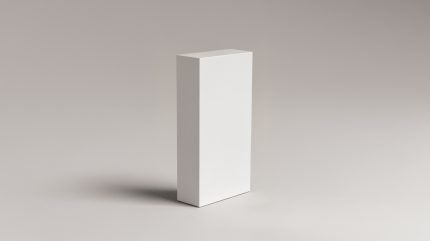
Rising consumer demand for sustainability has prompted companies worldwide to adopt minimalist packaging strategies, cutting waste while enhancing brand appeal.
As packaging waste contributes significantly to global pollution, brands are striving to reduce material use and carbon emissions.

Discover B2B Marketing That Performs
Combine business intelligence and editorial excellence to reach engaged professionals across 36 leading media platforms.
By embracing minimalist packaging, they are setting new industry standards and redefining what responsible packaging looks like.
Why minimalist packaging is winning companies over
Minimalist packaging focuses on using the least material necessary to protect and present a product effectively. This approach appeals to brands seeking to cut costs, reduce environmental impact, and meet the expectations of increasingly eco-conscious customers.
Apple, for instance, has consistently refined its packaging to remove unnecessary inserts, reduce box sizes, and use recyclable materials, setting a benchmark for tech companies worldwide.
The iPhone 12’s box eliminated the charging brick and earphones, shrinking the package size by nearly half compared to previous models. This move allowed Apple to ship more products per pallet, significantly reducing emissions from transportation.

US Tariffs are shifting - will you react or anticipate?
Don’t let policy changes catch you off guard. Stay proactive with real-time data and expert analysis.
By GlobalDataIn the fashion industry, Everlane has embraced minimalist, recyclable packaging for its clothing and accessories. Its simple, unbleached cardboard boxes and compostable poly bags are designed to minimise both aesthetic clutter and environmental harm.
By avoiding glossy coatings and using minimal printing, Everlane’s packages stay fully recyclable, reflecting the brand’s commitment to radical transparency.
In beauty, Glossier streamlined its packaging by removing layers of tissue, foam, and plastic inserts. Its pink pouches, once a signature, are now offered only upon request to reduce unnecessary waste. This shift demonstrates how brands can retain distinctive branding while moving towards minimalism.
Designing minimalist packaging with purpose
Successful minimalist packaging balances sustainability with functionality, ensuring products are protected while waste is minimised.
Unilever’s Dove soap bars, for example, now come in plastic-free boxes made of 100% recycled cardboard, eliminating the thin plastic wraps previously used.
The minimalist box design still conveys essential branding and product information while being fully recyclable in standard household systems.
Another standout example is IKEA, which redesigned its flat-pack furniture boxes to use fewer materials and smarter folding techniques. This change reduced packaging volume by up to 50% for some products, allowing more units to fit into each shipping container. The result: lower carbon emissions and reduced costs across the supply chain.
Meanwhile, food companies like Nestlé have made significant strides with products such as Smarties, which transitioned to paper-based, recyclable tubes and boxes, ditching the previous plastic packaging entirely.
The new minimalist design maintains product protection and brand identity while cutting plastic waste by hundreds of tonnes annually.
Connecting with consumers through minimalism
Minimalist packaging can also strengthen consumer relationships by reinforcing a brand’s environmental commitment. British skincare brand REN Clean Skincare uses simple, clear bottles with minimal labelling and fully recyclable caps, accompanied by cardboard cartons made from recycled paper.
This approach has helped REN become a leader in sustainable beauty packaging, earning consumer trust.
E-commerce brands benefit from minimalist packaging, too. Online retailer ASOS reduced its packaging materials by simplifying its mailing bags, cutting unnecessary adhesives and plastic layers.
The streamlined design not only reduced the brand’s carbon footprint but also improved customer experience by making parcels easier to open and recycle.
Beyond individual examples, large retailers like Walmart have pushed suppliers to reduce packaging materials across thousands of products, showing how minimalist packaging can scale across entire supply chains.
Walmart’s Packaging Scorecard encourages suppliers to use less material and design for recyclability, helping to drive industry-wide adoption of minimalism.
As consumer expectations for sustainability continue to rise, companies embracing minimalist packaging today are positioning themselves for long-term success. By investing in smart design, responsible materials, and clear communication with shoppers, brands can reduce their environmental impact without sacrificing product safety or appeal.
Minimalist packaging not only reduces waste and carbon emissions but also signals a brand’s dedication to solving one of the world’s most pressing environmental challenges.
In an era where every box, bottle, and bag matters, these pioneering companies show that less really can be more.





